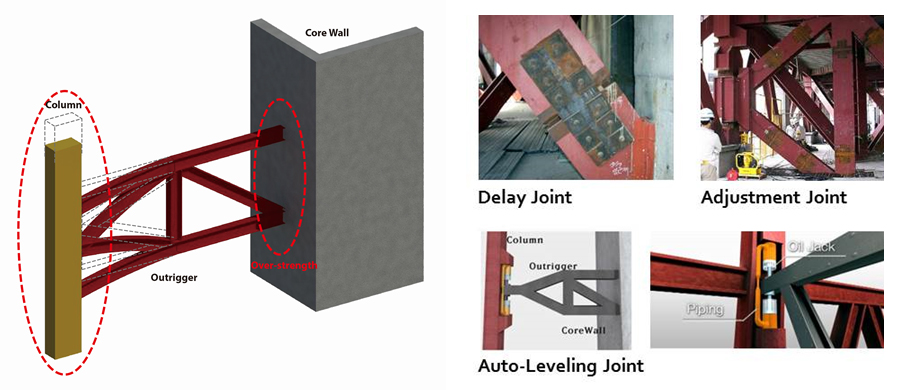Axial Shortening Adjustment and Measurement
ENGINEERING SPECIALTY

What it is
In the same way that humans become shorter as they get older, a building’s height also decreases with age. This is caused by material shrinkage due to gravity load, and it can be classified into elastic shortening and inelastic shortening (creep and drying shrinkage).
Shrinkage shortening is negligible in low rise buildings but can be substantial in high-rise buildings. In extreme cases, it may lead to structural instability.
Long term integrated shrinkage in vertical members may cause damage to curtain walls, ducts, elevators, etc. Shrinkage may also lead to cracks in walls and cause additional stress on horizontal members, slab and beams. Specifically, outriggers need to be carefully checked because its significant stiffness causes a substantial amount of additional stress.
Software
Visual Basic 6.0 based WACS (Wall and Column Shortening) was designed to analyze differential shortening. It is capable of analyzing multiple members with various target days simultaneously. It provides calculated shrinkage amounts so that users can easily understand additional stresses. It also provides basic adjustment data.

Outriggers and belt-trusses are very sensitive to differential shortening in vertical members. Therefore, various types of joints can be used depending on the connecting time and methods.





